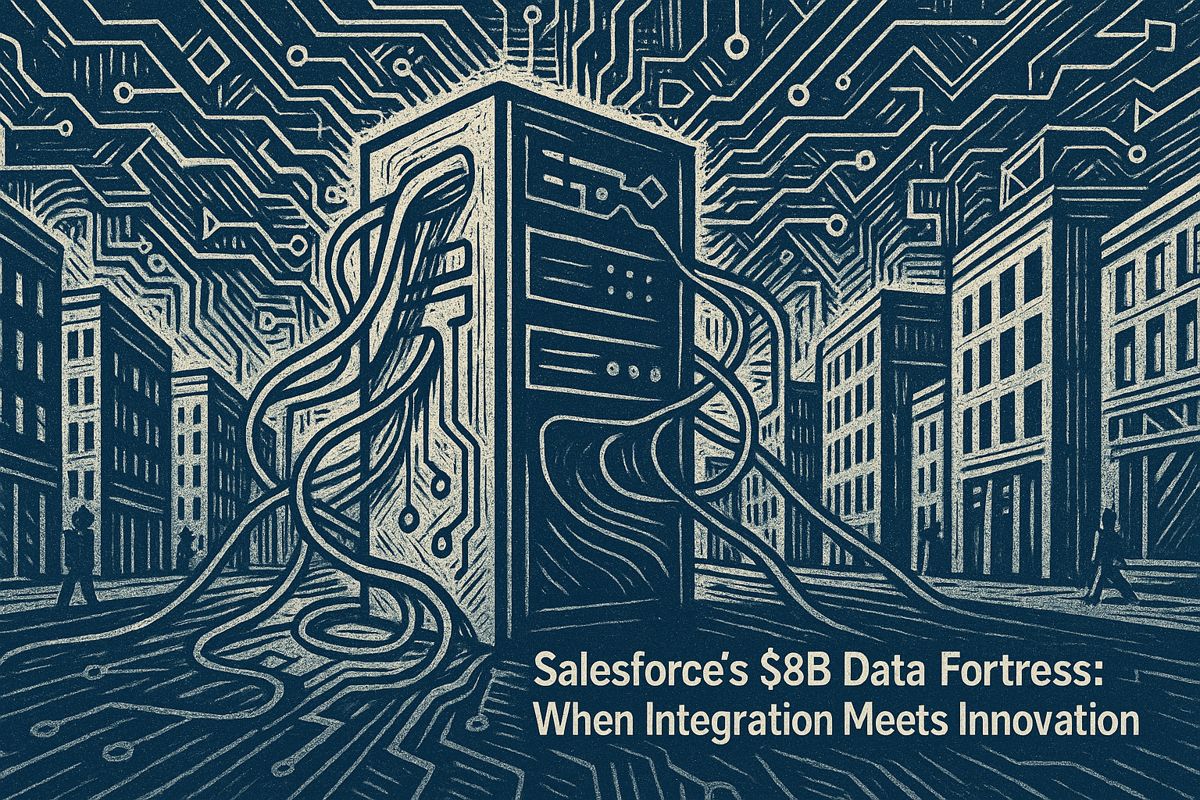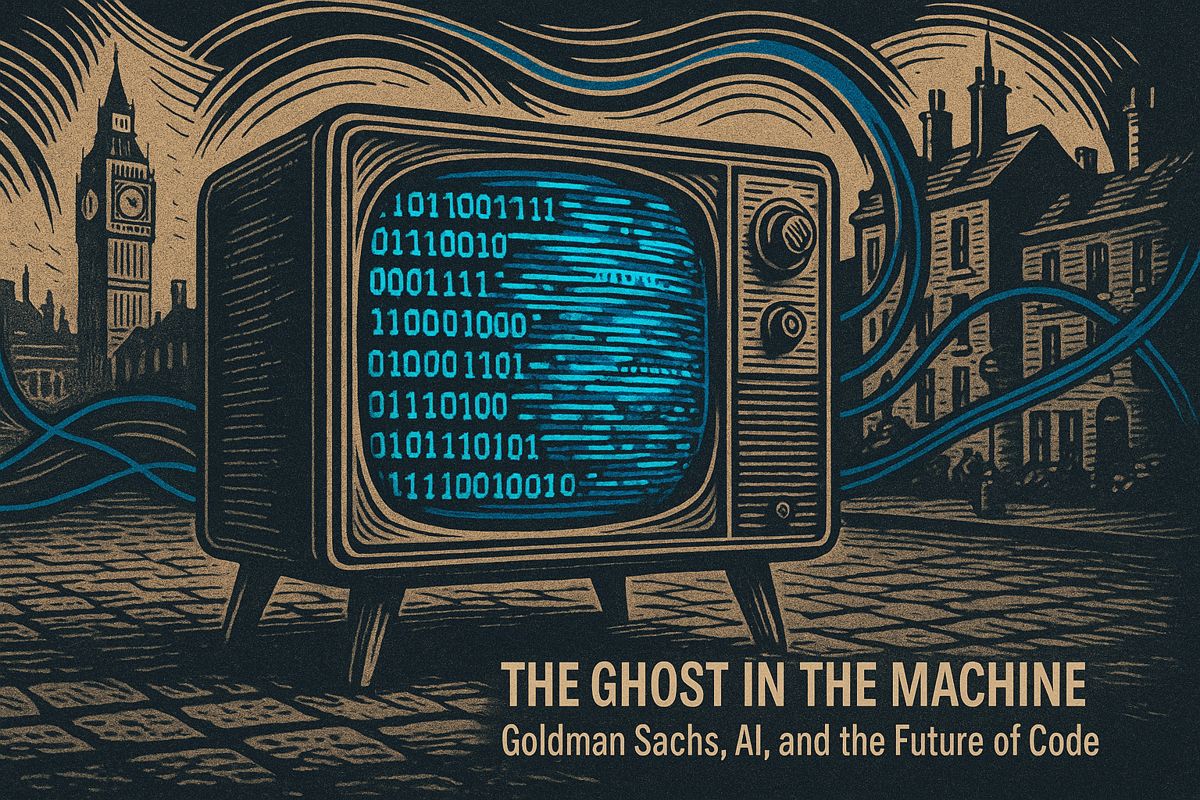Here’s the text with the most important phrase emphasized in markdown bold:
Salesforce’s $8 billion acquisition of Informatica is a strategic move to revolutionize AI data management by ensuring clean, trustworthy data. By purchasing Informatica, a veteran data integration company, Salesforce aims to create a comprehensive enterprise data platform that can trace and govern data lineage with precision. The deal addresses a critical challenge in AI: transforming messy, fragmented data into reliable, actionable insights that can power intelligent business decisions. This acquisition is more than a simple purchase; it’s a bold statement about the future of AI, where data quality and governance are as crucial as the algorithms themselves. Ultimately, Salesforce is betting that the key to AI success lies not in flashy technology, but in meticulous data preparation and management.
What Makes Salesforce’s $8 Billion Informatica Acquisition Significant for AI?
Salesforce’s strategic $8 billion acquisition of Informatica enables robust AI data governance by providing comprehensive data lineage, ensuring clean, trustworthy data for AI algorithms, and creating a comprehensive enterprise data platform that can transform how businesses manage and leverage their information.
The Spark That Lit the Fuse
A few days ago, a headline grabbed me by the collar and tossed me right back to my first consulting gig at Wilson Mutual – a midsized, slightly weary insurance company in Minnesota. There I was, heavily caffeinated, listening to the IT manager complain (with the passion of someone who’d spent all night untangling XML exports) about wrestling customer records from five crusty, interlocking legacy systems. “More data?” he said, slamming his fist softly on a sticky desk, “We need less mess, not more mess.” That frustration hasn’t changed much over the years, has it? The recent news that Salesforce is forking over $8 billion in cash to acquire Informatica feels like a neon arrow pointing at that same, old problem.
I’ll admit, Informatica’s been a recurring character in my own career. Years ago, a data architect at Aviva described Informatica as “less of a magician, more of a plumber – and occasionally a crime scene investigator.” That stuck with me. Everyone wants flash, but nobody wants burst pipes. The world remembers when data plumbing fails, not when it quietly hums along. Now, Salesforce is buying the plumber, the inspector, and the entire toolkit.
Why This Acquisition Isn’t Just Another Big Check
Let’s be honest: “agentic AI” sounds like a Silicon Valley buzzword, but there’s substance lurking in the jargon. Salesforce is staking its next act on the idea that autonomous AI agents will soon operate like tireless digital sous-chefs – prepping, serving, and even taste-testing information around the clock. But if your ingredients are spoiled, even the fanciest chef bot will whip up disaster. Garbage in, garbage out. Or in the words of an old project manager of mine, “If you feed your AI nothing but vending machine snacks, don’t expect it to run a marathon.”
So why did Salesforce choose Informatica? Trust, context, auditability. Informatica’s data lineage tools allow you to trace the entire journey of a data point – you can see if it started as a humble CSV export or a cryptic SAP transaction, and exactly how it was sliced and diced before landing in your dashboard. This isn’t just about compliance with acronyms like GDPR or CCPA. It’s about giving AI algorithms the clarity to tell revenue from cost, or customer from vendor, even when those fields come from clashing systems. Good governance stops you from automating chaos – and believe me, I’ve seen what happens when that step gets skipped.
Here’s a sensory detail: the sound of three different ETL jobs humming on outdated servers at 2 AM feels like a swarm of agitated bees in an air duct. Informatica’s integration has always been about taming that racket, lightening the cognitive load for both humans and machines. (And yes, cognitive load isn’t just psychobabble – it’s the real risk when companies try to stitch together a Frankenstein’s monster of apps.) The result? Salesforce’s AI Cloud, fueled by Informatica, can reason and recommend with the poise of a Jeopardy champion, not a sleep-deprived intern.
Building the Data Fortress – And the Sushi Counter
Numbers don’t lie, though they sometimes exaggerate for effect. Marc Benioff says the addressable market for enterprise data platforms now tops $150 billion.
Salesforce isn’t just adding another software logo to its collection. With Mulesoft for integration, Tableau for visualization, and now Informatica for governance, Salesforce is constructing a data fortress as imposing as Neuschwanstein. Yet I can’t help but picture Informatica less as a castle wall, more as the sushi chef behind the counter – meticulous, methodical, and obsessed with quality.
If you’ve ever tried launching an AI pilot, only to have it stagger and collapse on the rocks of dirty or duplicated data, you’ll appreciate the gravity here. Clean data isn’t glamorous, but it’s absolutely vital. Salesforce is wagering $8 billion that the real AI race will be about who’s got the freshest, best-prepared, most trustworthy data. Industry analysts from the likes of BARC and Gartner are already foreshadowing a wave of similar mergers.
And let’s spare a thought for Informatica itself. Since 1993, they’ve weathered Web 1.0, the dotcom bust, the cloud revolution, and now the AI surge – all with a single promise: “We’ll make your data make sense.” Their client list is a Who’s Who of the Fortune 500. Beneath the jargon, their stack is built for scale, reliability, and compliance. The difference between a plate of tangled data spaghetti and a slice of pristine data sushi? It’s not just taste – it’s survival.
Reflections on a Data Odyssey
Looking back, I have to smile (a bit ruefully) at my younger self, who thought one more dashboard would solve everything. There was a moment, years ago, when I insisted on building a custom ETL pipeline from scratch – only to discover, six months and



















